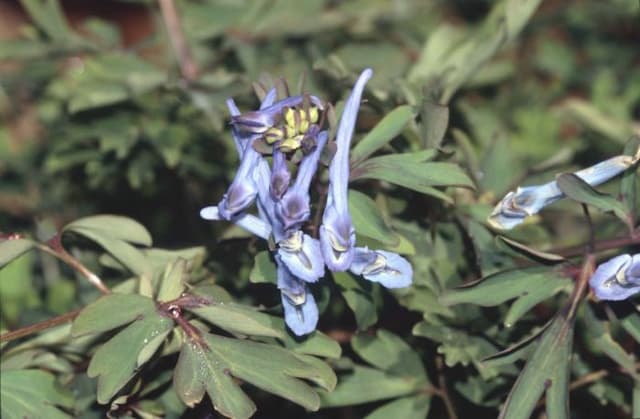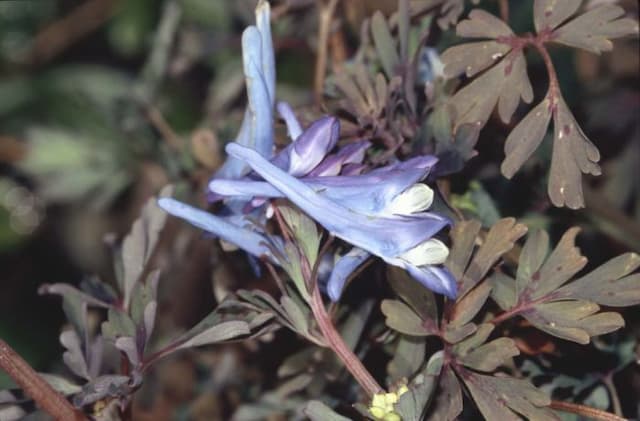Oriental poppy 'Beauty of Livermere' Papaver (Oriental Group) 'Beauty of Livermere'

ABOUT
'Beauty of Livermere' is an herbaceous perennial to 1m tall, with toothed and bristly lance-shaped leaves to 30cm long, and single, deep scarlet flowers 20cm across in late spring and early summer, each petal with a bold black blotch at the base
About this plant
 Names
NamesFamily
Papaveraceae.
Synonyms
Oriental Poppy, Beauty of Livermere.
Common names
Papaver orientale 'Beauty of Livermere'.
 Characteristics
CharacteristicsLife cycle
Perennials
Foliage type
Deciduous
Color of leaves
Green
Flower color
Red
Height
2-3 feet (60-90 cm)
Spread
1-2 feet (30-60 cm)
Plant type
Herb
Hardiness zones
3-7
Native area
Caucasus
Benefits
 General Benefits
General Benefits- Ornamental Appeal: The plant boasts bold, red flowers that add vibrant color and aesthetic appeal to gardens and landscapes.
- Attracts Pollinators: It is known to attract bees and other pollinators, supporting biodiversity in the garden.
- Low Maintenance: Once established, it requires minimal care, making it ideal for gardeners of all skill levels.
- Drought Tolerance: The plant has good drought tolerance and can survive in drier conditions without much watering.
- Cold Hardy: It can withstand cold temperatures, making it suitable for planting in various climates.
- Seasonal Interest: Its blooming period in late spring to early summer offers a seasonal highlight in the garden when many other plants are not in peak bloom.
- Perennial Growth: As a perennial, it returns year after year, providing long-term value and reducing the need for replanting annually.
- Versatility in Landscaping: It can be used in a variety of garden settings such as borders, rock gardens, and cottage gardens.
- Seed Heads: After flowering, it produces attractive seed heads that can add interest to the garden even when the plant is not in bloom.
 Medical Properties
Medical PropertiesThis plant is not used for medical purposes.
 Air-purifying Qualities
Air-purifying QualitiesThis plant is not specifically known for air purifying qualities.
 Other Uses
Other Uses- Poppy seed oil, derived from the seeds, can be used in cooking, salad dressings, or as a carrier oil in skincare products.
- The seeds can be added to granolas, muffins, or bread for a nutty flavor and added nutrition.
- Papaver orientale can be utilized in art, as it provides vivid color which has inspired many artists to feature them in floral paintings.
- The stems and seed pods can be dried and used in a decorative manner for flower arrangements or potpourris.
- The flowers can be pressed or dried and used in craft projects, such as making bookmarks or greeting cards.
- These plants can be used as a teaching tool in botany or horticulture courses to discuss perennial plant growth or flower structure.
- The pollen collected by bees from these plants can contribute to the production of a uniquely flavored honey.
- During World War I and II, poppies became a symbol of remembrance, and this practice still continues, often involving the use of real or artificial poppies.
- Photographers can use the vivid colors of the Poppy to create visually striking photographs which can be utilized in various media.
- Poppy petals can be used as a natural dye in textile crafts or for tinting paper.
Interesting Facts
 Feng Shui
Feng ShuiThe Oriental poppy is not used in Feng Shui practice.
 Zodiac Sign Compitability
Zodiac Sign CompitabilityThe Oriental poppy is not used in astrology practice.
 Plant Symbolism
Plant Symbolism- Remembrance: Oriental Poppies, including 'Beauty of Livermere', are often associated with remembrance, especially in the context of fallen soldiers and those who have been lost during times of war, partly due to their prominent use in commemorating World War I.
- Peace: After their symbolic association with the fallen of WWI, poppies, including the 'Beauty of Livermere', have also come to represent peace and the end of conflict.
- Resilience: As poppies can grow in adverse conditions and are often some of the first flowers to bloom in devastated battlefields, they symbolize resilience and the ability to recover from hardship.
- Beauty and Success: The vibrant red of the 'Beauty of Livermere' poppy is often seen as emblematic of beauty and success, perhaps due to its eye-catching and luxurious appearance.
- Rest and Eternal Sleep: In Greek and Roman myths, poppies were associated with sleep, because of the sedative effect of the plant's opiate content. This has further evolved into a symbolic meaning of eternal rest, making it a common flower for funerals and memorials.
 Water
WaterOriental Poppies like 'Beauty of Livermere' prefer to be watered deeply and infrequently rather than little and often. Ideal watering for established plants is about 1 inch of water per week, whether from rainfall or manual watering. Ensure that the soil has good drainage, as these poppies do not like to sit in wet soil. During the growing season, especially in dry spells, you might need to water them every 5 to 7 days. Reduce watering after the poppies have bloomed and the foliage begins to die back in the summer as they enter dormancy.
 Light
LightThe 'Beauty of Livermere' Oriental Poppy thrives best in full sun. It should be planted in a location where it can receive at least 6 to 8 hours of direct sunlight daily. These bright light conditions help the poppy produce its most vibrant flower colors and sturdy stems.
 Temperature
TemperatureThe ideal temperature range for the Oriental Poppy 'Beauty of Livermere' is between 60 and 70 degrees Fahrenheit during the day. They can withstand cold down to about -30 degrees Fahrenheit in winter, making them very cold hardy. During the summer, they can tolerate temperatures up to 90 degrees Fahrenheit.
 Pruning
PruningPruning Oriental Poppy 'Beauty of Livermere' is done to remove spent flower stems and encourage a tidy plant habit. After the blooms have faded, cut back the flower stalks to their base. In the fall, once the foliage has yellowed and died back naturally, it should be pruned to ground level. Pruning is typically done once a year after flowering and then again to remove dead foliage in late autumn.
 Cleaning
CleaningAs needed
 Soil
SoilOriental Poppy 'Beauty of Livermere' thrives in well-drained soil, preferring a mix rich in organic matter with a soil pH range of 5.5 to 7.0. Add compost and sharp sand to improve soil structure and drainage for optimal growth.
 Repotting
RepottingOriental Poppies, including 'Beauty of Livermere', are not commonly grown in pots and typically do not require repotting as they are perennials best suited to garden beds.
 Humidity & Misting
Humidity & MistingOriental Poppy 'Beauty of Livermere' is tolerant of a wide range of humidity levels and does not require specific humidity conditions to thrive, making it versatile in various environments.
 Suitable locations
Suitable locationsIndoor
Provide bright light and cool temperatures for indoor Oriental Poppies.
Outdoor
Plant in full sun, well-drained soil, divide every 5 years.
Hardiness zone
3-7 USDA
 Life cycle
Life cycleThe Oriental Poppy 'Beauty of Livermere' begins its life as a seed, requiring a period of cold stratification to break dormancy and germinate successfully. Upon germination, it develops a rosette of leaves as it enters the vegetative stage, during which it establishes a strong root system. As temperature increases in spring to early summer, the plant transitions to the flowering stage, producing large, vibrant red blossoms with a black base, which are attractive to pollinators. After pollination, the flowers fade and seed pods form, eventually drying and releasing seeds for dispersal. The plant then enters a period of dormancy in late summer; the foliage dies back, and the plant survives as a rootstock through the winter. In the following spring, the plant resumes growth from the rootstock, completing its perennial cycle.
 Propogation
PropogationPropogation time
Spring
Propogation: The Oriental Poppy 'Beauty of Livermere' is commonly propagated through seed sowing. The best time to sow seeds is during late winter or early spring. You would scatter the seeds directly onto the surface of well-drained soil, ideally in a cold frame or a sheltered outdoor area. Light is needed for germination, so do not cover the seeds with soil but you may gently press them into the earth to ensure good seed-to-soil contact. Keep the soil moist but not waterlogged. Germination can be erratic, spanning a period of several weeks. Once seedlings have grown large enough to handle, they can be transplanted into their final growing positions, ensuring they have plenty of space for their large, robust growth habits.









